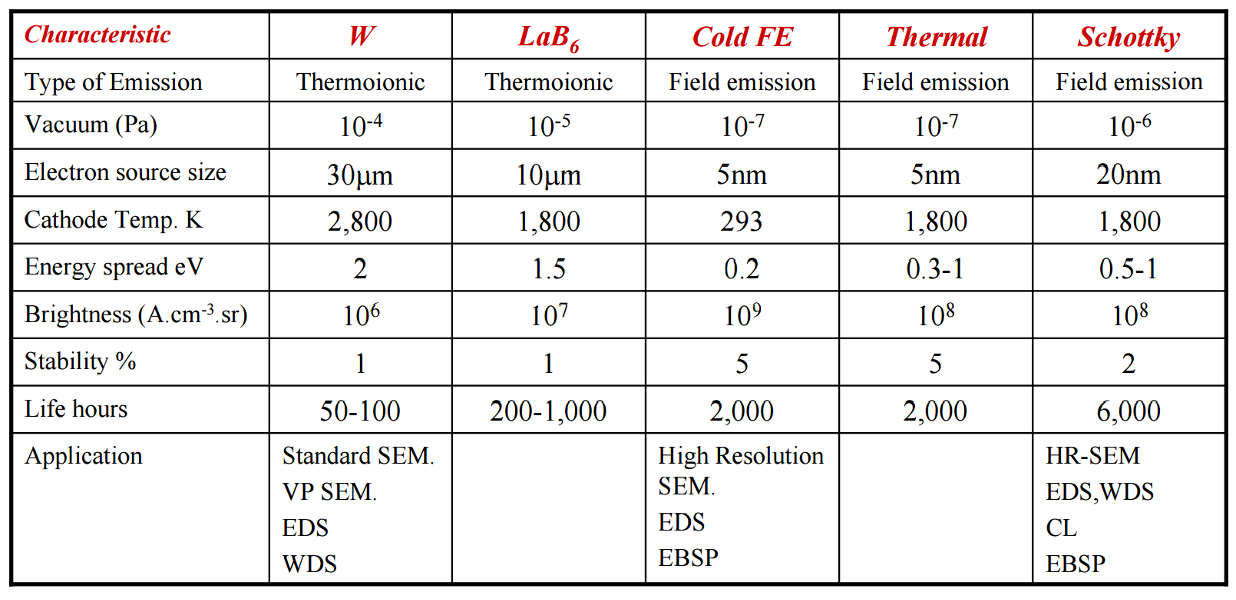Electron Microscopy - part 1
1/16
There's no tags or description
Looks like no tags are added yet.
Name | Mastery | Learn | Test | Matching | Spaced |
|---|
No study sessions yet.
17 Terms
The scanning electron microscope
principles of operation
Introduction
The first, true scanning electron microscope (SEM) was developed and described in 1942 by Zworykin et al.
V. K. Zworykin, J. Hiller and R. L. Snyder, ASTM Bull. 117, 15 (1942)
Electrons in an electric field
Electrons can be accelerated up to 100,000 eV to give a wavelength down to 0.012 nm
Electrons accelerated to 100,000 eV cannot be used in imaging as it is destructive to the sample.
Scanning electron microscope resolutions are currently limited to around 25 Angstroms (2.5 nm).
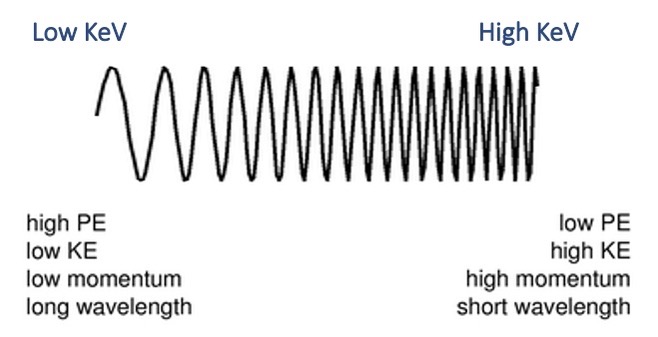

SEM operation
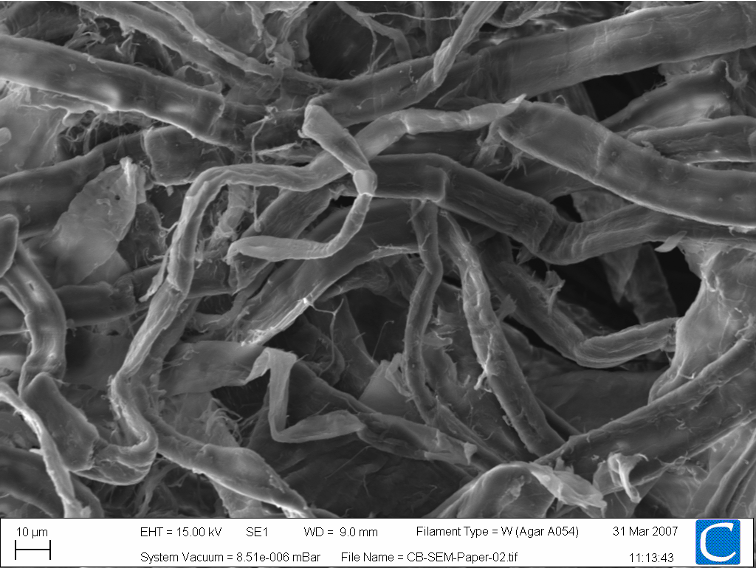
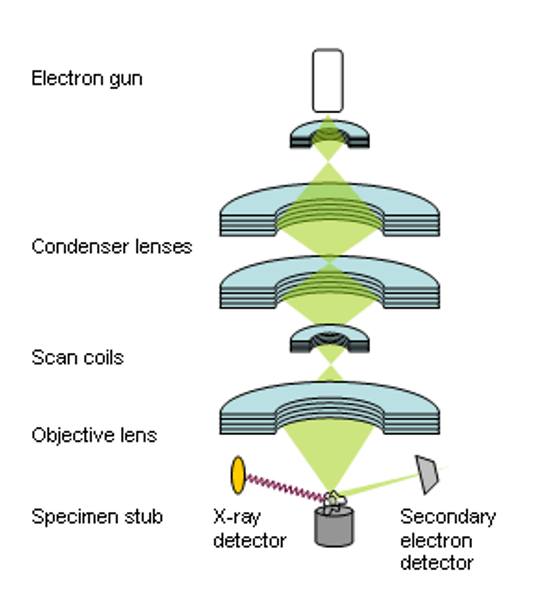
Instrument is located on a vibration free floor away from magnetic and electrical fields.
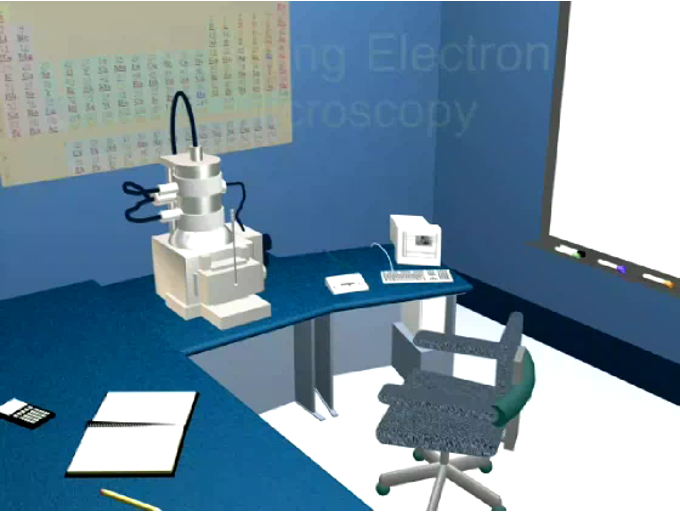
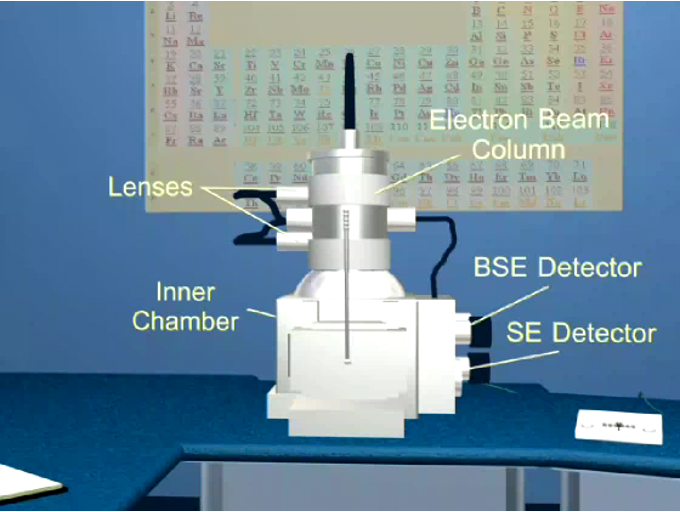
The column and electro-optics and chamber are under high vacuum.
the components share the names with component in an optical microscope.
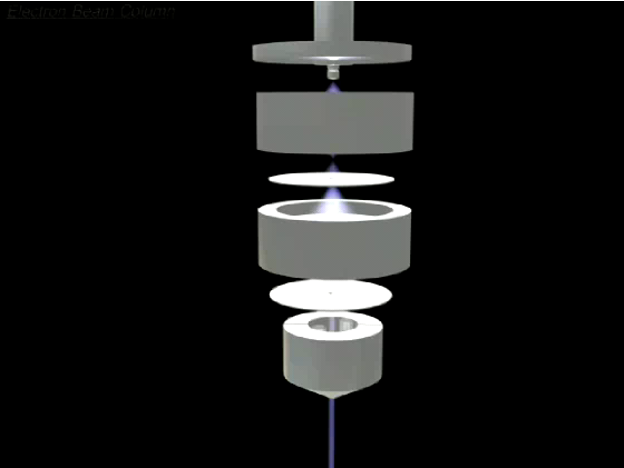
The electron gun
The filament is heat to generate electrons which hare accelerated down the column.
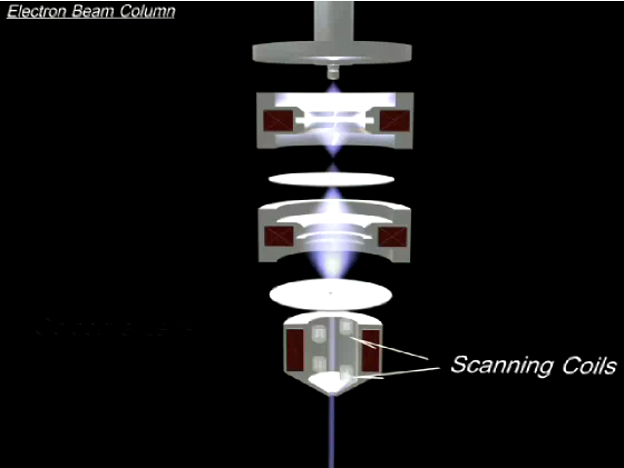
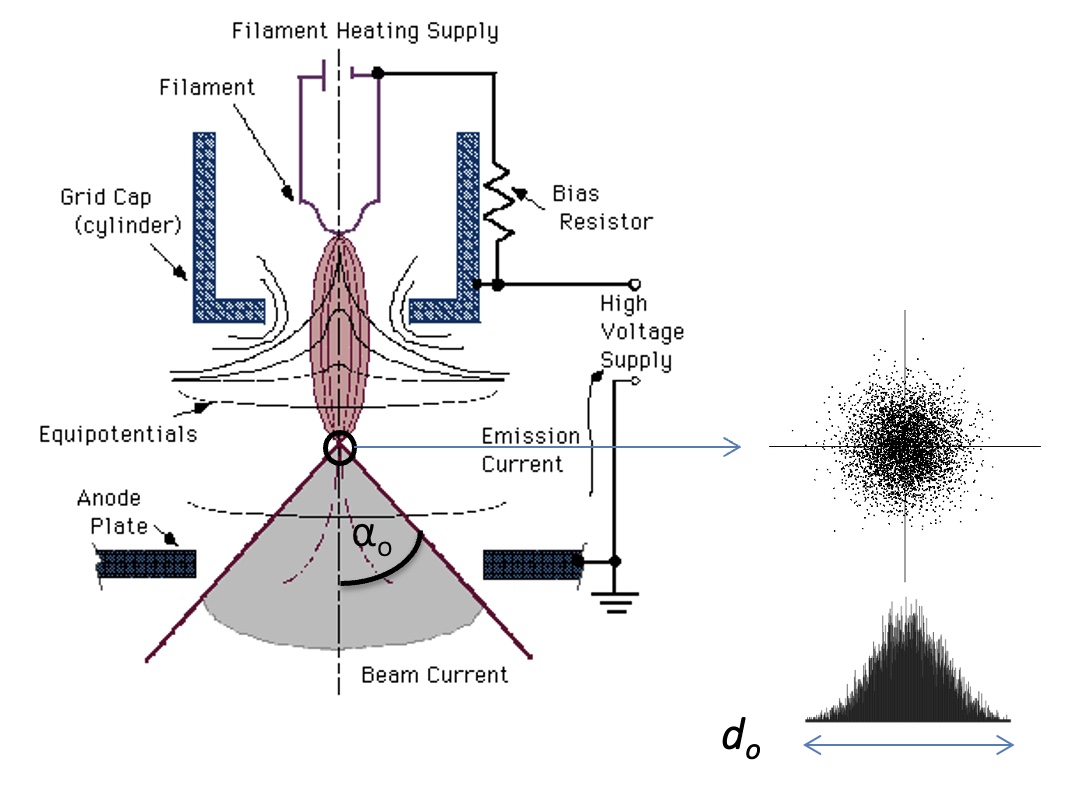
the electron beam comes from a filament, made of various types of materials.
electrons at the bottom of the space charge can exit the gun area through a small (<1mm) hole in the Wehnelt Cap.
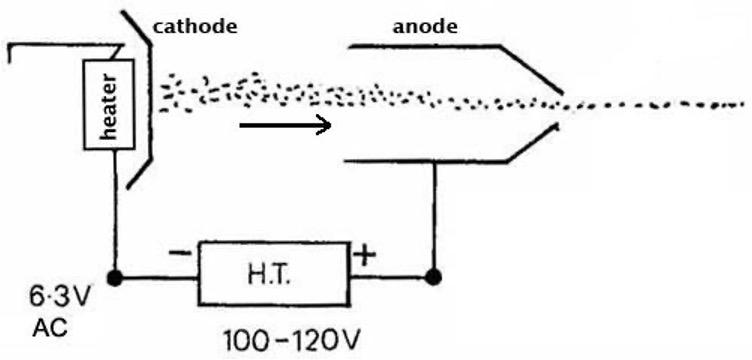
Thermionic Emission
Occurs when enough heat is supplied to the emitter so that electrons can overcome the work-function energy barrier (EW).
E = EW + EF
EF is the electrons Fermi Energy. The highest energy state that an electron can have at 0 K.
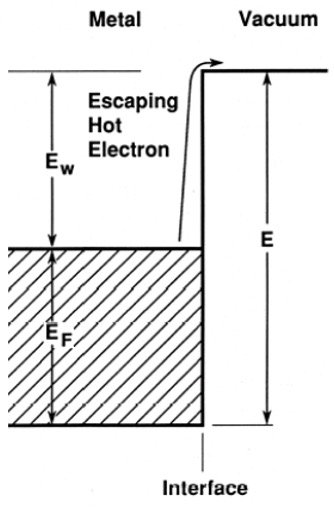
Thermionic Emission
The flux of electrons, J, from the filament-Wehnelt configuration can be expressed by the Richardson-Dushman equation (1923):
where:
A = is a material constant (60 amp cm-2 K-2 for W),
T = is the temperature
k = is Boltzmann’s constant = 8.62x10-5 eV K-1, and
Ew = is the thermionic work function (about 4.5 eV for W).
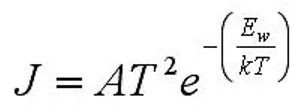
Emission Current (ie) = total current emitted from the filament.
Beam Current (ib) = electron current that leaves the gun through the hole in the anode.
Note: at each lens and aperture along the column the beam current becomes smaller.
Probe Current (ip) = electron current measured at the specimen.


Current Density (d) = cross over diameter and the intensity distribution at the cross over is taken to be Gaussian.
The current density of the beam (Jb) at the cross-over (in Amp cm-2) is:
where do is d at initial cross-over.
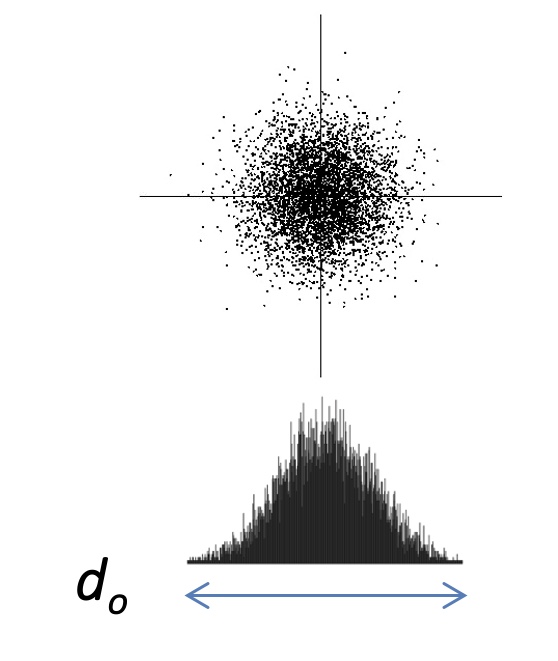
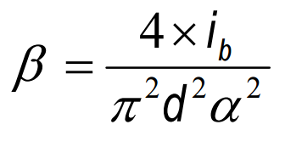
Brightness (β) - a measure of gun performance.
It is defined as the d per solid angle, where the solid angle is in steradians:
where:
α is the divergence angle.
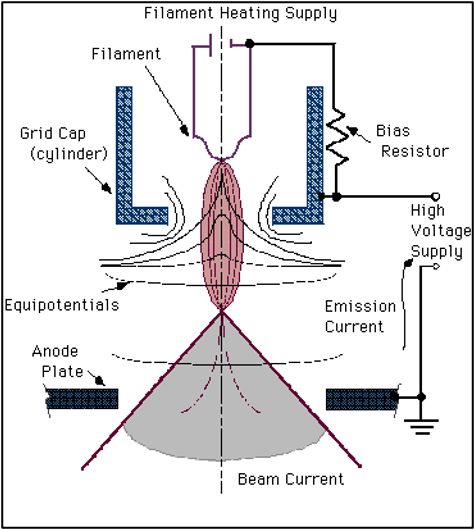
The steradian or square radian is the SI unit of solid angle. It is used in three-dimensional geometry, and is analogous to the radian, which quantifies planar angle.
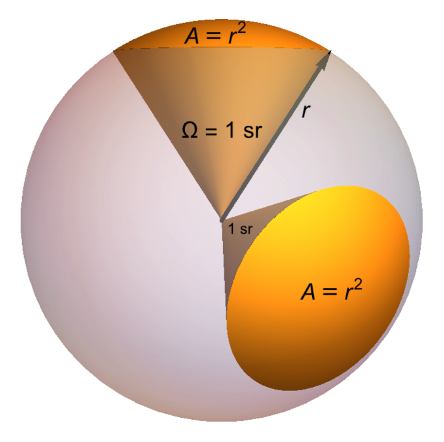
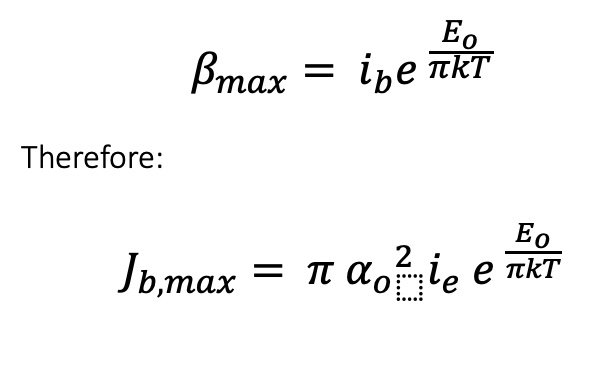
The theoretical maximum value for β was given by Langmuir in 1937:
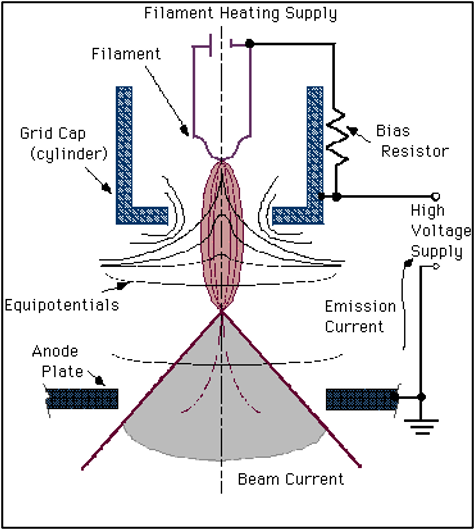
Other examples of filaments are Lanthanum Hexaboride (LaB6) filaments and field emission guns (FEG).


